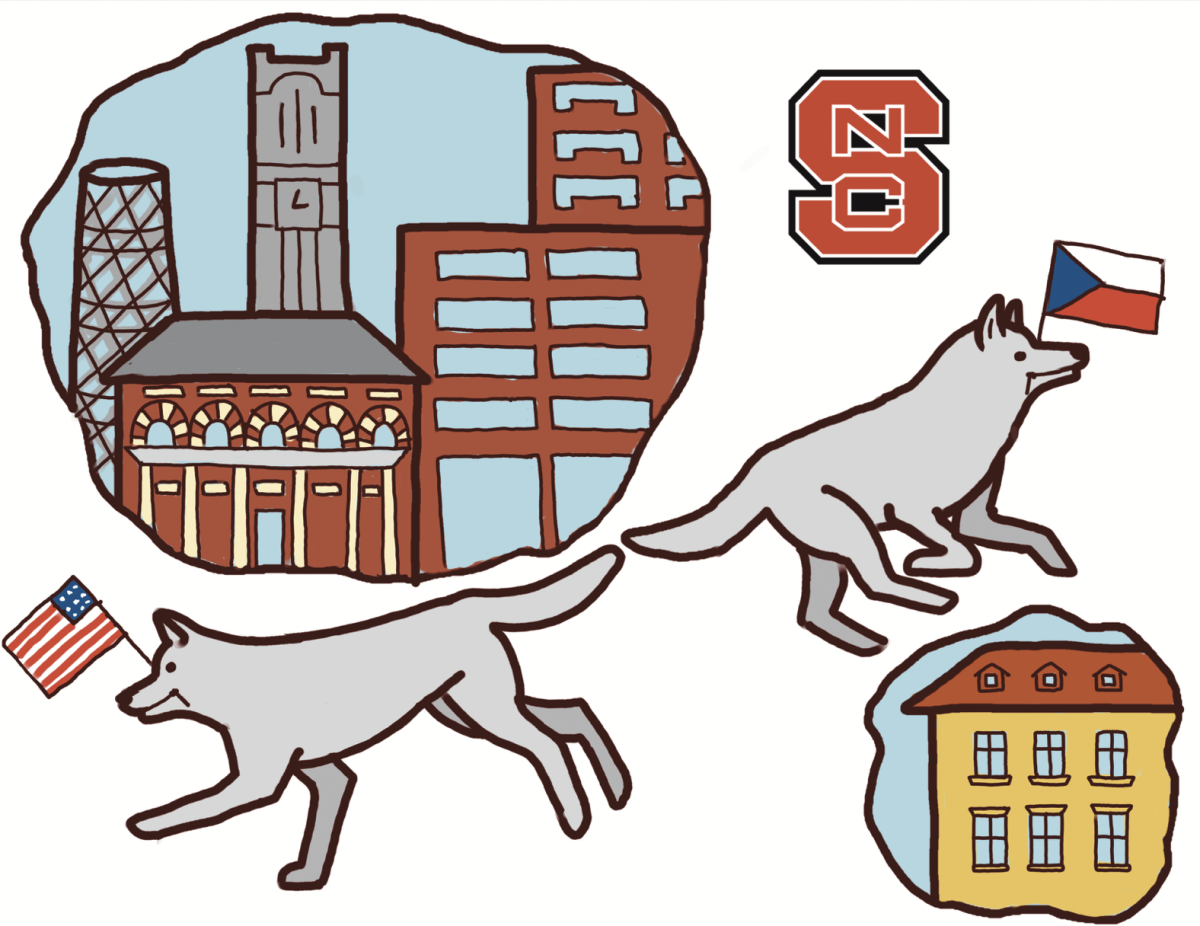With more than 1,000 buildings owned or leased by the University, a roughly 2,000-acre campus and more than 600 student organizations and clubs, NC State is the largest university in North Carolina.
For international students, the sheer magnitude of NC State’s campus is often the most striking difference between European universities and NC State.
Jakub Ročeň, a second-year master’s student pursuing a degree in management at the Business School of Economics in Prague, said his university doesn’t have a campus at all.
“There are three or four buildings, and they’re all connected to one huge building,” Ročeň said. “There are a lot of schools in Prague that have a campus, but those are on the outskirts of the city. … Universities located in the center of Prague, like my home university, don’t have a campus.”
Giovanni Consiglieri, an Italian exchange student pursuing a business degree at Università Cattolica del Sacro Cuore in Piacenza, said the buildings and facilities on campus at NC State are used for more than just class, as opposed to his home university.
“There are a lot of events other than classes, and it happens all within the walls of the campus,” Consiglieri said. “So, the main difference I found is in Italy, and really in Europe in general, is most buildings are for classes, whereas here they’re also used for clubs and organizations or to host events.”
Erik Rodriguez, a fourth-year studying business administration at NC State who studied abroad at Vienna University of Economics and Business in Austria, WU, said his host university reminded him of a community college.
“Here in Raleigh, we’ve got Wake Technical Community College, and it’s a lot smaller, and it doesn’t offer as many associate degrees in different fields,” Rodriguez said. “WU was a bit like that since it only offered degrees in economics and business.”
Rodriguez also said he was surprised by the modern architecture and the futuristic flair of the different buildings and amenities on campus, particularly the libraries — he said he has never seen anything similar at NC State.
Thimo Böck, a second year master’s student studying mechanical engineering at Reutlingen University in Germany, said he had a similar experience with on-campus housing at his home university.
“On-campus housing is way more modern and newer at my home university,” Böck said. “We basically only have shared flats where everyone has their own room and you share a kitchen. The other option is to rent your own small flat where you have a kitchen, a bathroom and a study room all to yourself.”
Tomas Zaviacic, a German exchange student who studied mechanical engineering at the University of Stuttgart, said the opposite was true for his home university’s campus.
“It seems to me as if Talley Student Union and the Carmichael Gymnasium are fairly new whereas most parts of our campus in Germany were built in the ‘70s and ‘80s,” Zaviacic said. “We also don’t have a gymnasium or such a nice theater, like Stuart Theatre.”
Zaviacic said just like at NC State, there are a lot of different options for students to live on campus. But unlike NC State students, those who live on campus don’t spend their free time with student organizations.
“We have maybe around 30 to 40 clubs, whereas NC State has over 600 of them,” Zaviacic said. “Students are not usually going to clubs that much. They are not very popular. We also don’t organize huge events such as the Red and White Week as NC State does. We may have small parties, but they usually don’t incorporate the whole university.”
The concept of dining halls is also very different at European universities. While some of them do have one or at least a building where students can gather around and eat, meal plans or all-you-can-eat buffets aren’t very common.
“We don’t have a meal plan, but we do have a dining hall,” Ročeň said. “So, we buy the meal every day for lower prices than normal restaurants, but it’s disgusting. And we have a few restaurants in the building in the university.”
Students said school tuition is high at NC State, especially compared to European universities and Vienna University of Economics and Business in particular. In most European countries, tuition is much lower, contributing to why universities are smaller. Many students don’t have to work while they study at European universities.
“There are some working opportunities at university, like archivers or administrative assistants, but those jobs aren’t paid well; it’s like $5 per hour,” Ročeň said. “We usually work part-time at companies outside of the university, instead doing activities at the university itself or working on campus. That’s how we gain most of our work experiences.”
For more information on upcoming study abroad opportunities, visit the Study Abroad website.








